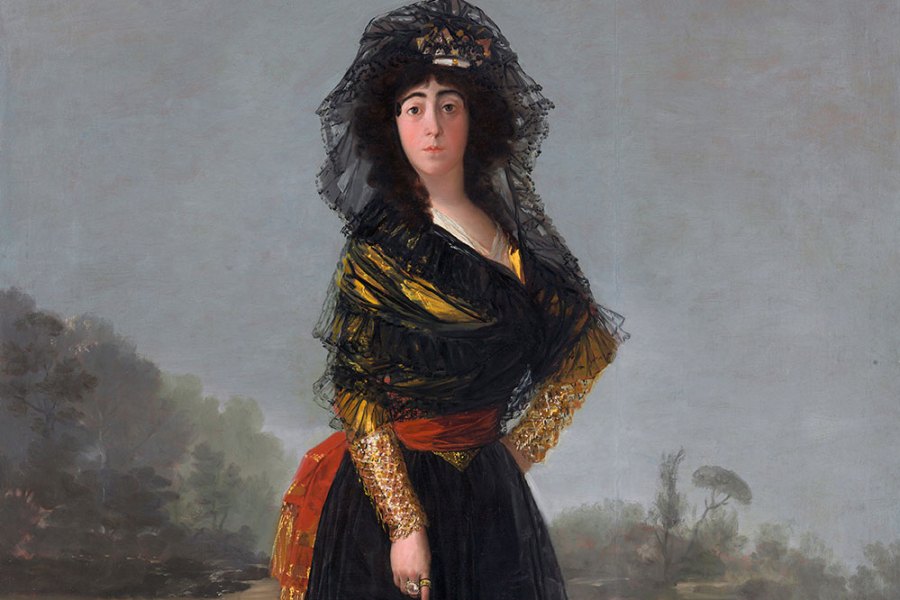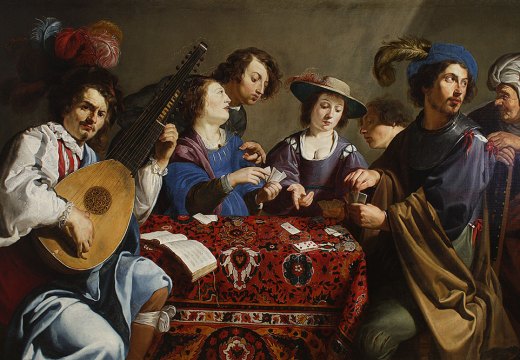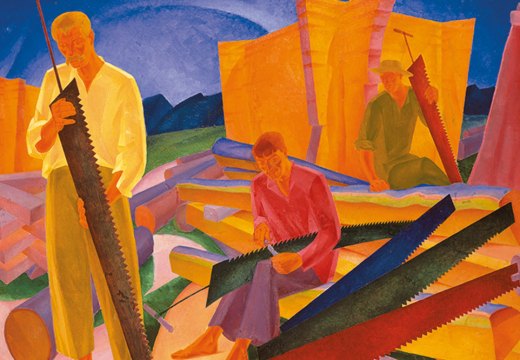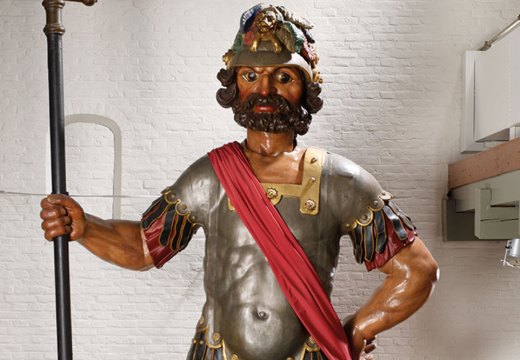From the March 2023 issue of Apollo. Preview and subscribe here.
In 1898, darkness fell on the first empire on which the sun never set. Some four centuries after Columbus landed in the Americas and claimed them for the crown of Spain, the Spanish were sent packing from their last redoubts, helped on their way by the new power on the block, the United States.
The same year, the heir of a major American railroad dynasty, Archer Milton Huntington, took up residence in Seville, the city from which the vast Spanish empire had been controlled. Huntington was not yet 30 but had already developed a thorough knowledge of Spanish art, history and architecture. His passion for Spain had been born in the unlikely surroundings of Merseyside, where, shortly after landing in Europe for the first time, he had picked up a book on the country. ‘Spain must be much more interesting than Liverpool,’ was his rather shocking inference. By 1898 he was superintending archaeological digs in Andalusia, consorting with Spanish scholars and collectors and starting to assemble his own collection of manuscripts, paintings and artefacts.
It was not a promising time for Hispanophilia, at least in the United States. Yet there was something apt about a plutocrat from the rising power snapping up the antiquities of a decaying one. The strength of the dollar vis-à-vis the Spanish peseta naturally helped. By the following decade, Huntington’s collection had grown so huge that a purpose-built edifice was required to house it. In 1908, the Hispanic Society of America Museum & Library, established by Huntington in northern Manhattan to display his acquisitions, opened its doors.

The Duchess of Alba (1797), Francisco de Goya y Lucientes. The Hispanic Society of America, New York
The Royal Academy exhibition ‘Spain and the Hispanic World’ presents some 150 works from Huntington’s vast collection. It is as close to a universal exhibition as one can probably hope for within an indoor space of ten or so rooms. Some four millennia of works of art in a thrilling array of media – bronze, marble, silk, lapis lazuli, parchment, canvas – are on show, not only from the Iberian peninsula itself but from Mexico, Peru, the Philippines and all points in between. What can’t be displayed at scale – the galleons that carried Spaniards across the oceans, the silver mines that financed the artworks acquired by Spain’s grandees and, eventually, by Huntington – is offered in microcosm, through maps, diagrams, marginal illustrations.
Hybridity is an inevitable theme here. Used in the context of medieval Spain – famously home to Christians, Muslims and Jews – the word has long since acquired the quality of cliché. A pleasing aspect of this exhibition, however, is the suggestion of improbable cross-fertilisations. It’s no major surprise to see a 15th-century Hebrew Bible done up with the kinds of illuminations one would expect to find in a Book of Hours belonging to the great scourge of Jews, Queen Isabella of Castile. But what is one to make of the resemblance between a geometric-patterned rug produced in Muslim-ruled Granada in around 1400 and an 18th-century silk shawl described in the catalogue as an example of ‘the most characteristic and enduring of all traditional Mexican women’s garments’? Then there is the visual paradox – or is it a dark joke? – of a Jesuit writing cabinet decorated with motifs associated with the non-literate Inca people.
The limits of hybridity can be sought here too, if you are tired of the usual narrative. Take, for instance, a glazed earthenware plate produced in the 14th century by Muslim potters in Valencia for the noble Despujol family. The concentric blue and brown arabesques are flawlessly done, but witness the painter struggling to squeeze the family’s coat of arms into the object’s centre.

The Four Fates of Man: Death, Soul in Hell, Soul in Purgatory, Soul in Heaven (c. 1775), attrib. Manuel Chili, called Caspicara, Ecuador. Hispanic Society Museum & Library, New York
Although the exhibition is arranged in a broadly chronological manner, there are arresting juxtapositions throughout. A highlight is an extraordinary quartet of half-length sculptures from 18th-century Ecuador illustrating the various fates awaiting man after death. With the tormented figure of man in hell, skin burnt to umber, hair standing on end, mouth agape in agony, one is thrown back to the start of the exhibition and a frightful Roman-era mosaic excavated near Seville showing the head of Medusa, eyes bulging, cheeks ballooning to the brink of explosion. A crude ‘map’ of the Mexican village of Teocaltiche from the early colonial period calls to mind medievaldoom paintings, brimming as it is with scenes of war and human sacrifice, all presided over by an outsized androgynous figure. Next to this hangs an alternative vision of the state of nature pertaining in the Americas: a view of the Ucayali River in Peru and its verdant environs, teeming with monkeys, parrots, turtles and every imaginable fish.
Across the room, the order ostensibly brought by the colonists is captured in a series of views of Mexico City, its grid-trammelled street and ruler-straight avenues to the fore. In the most unusual of these, a paper and sateen view of the Zócalo, you can pick out the individual paving slabs and rustications. An illustrated manuscript on the ‘origin, customs and present status of Mexicans and Filipinos’ testifies to the Spanish urge to organise this bewilder- ing world, which manifested most notoriously in the ‘caste’ paintings purporting to show the different ethnic admixtures. One of these is on display here. Although the legend claims that the Spanish ‘classified and controlled colonial society through the enforcement of racial stereotypes’, anyone who has tried to divine a system from these works will know the hopeless confusion into which such attempts fell.
The least exciting parts of the exhibition are those designed to pull in the public. The three Goya portraits enthroned in the central rotunda feel frankly over-exposed, while Velázquez’s painting of the Count-Duke of Olivares appears plain alongside the less well-known Sebastián Muñoz’s dramatic picture of Queen Maria Luisa lying in state.
The foregrounding of these archetypal Spanish painters points up the main problem of this exhibition: the distorting effect of a ‘Hispanic’ approach to Spain’s past. The most influential painters at the Spanish court, at least before Velázquez’s time, were as often as not from Italy and the Low Countries as from Spain itself, though you wouldn’t guess that here. It’s another cliché, of course, but it still bears saying: no European country – even one with an empire as ample as Spain’s – lived in isolation from its neighbours. Young Huntington, eager to banish from his mind unhappy memories of Liverpool, clearly wished to imagine otherwise. So for all its creator’s pretensions to scholarship, Huntington’s collection has more the flavour of a romantic quest than a modern scientific enterprise.
‘Spain and the Hispanic World: Treasures from the Hispanic Society Museum & Library’ is at the Royal Academy of Arts in London until 10 April.
From the March 2023 issue of Apollo. Preview and subscribe here.
Unlimited access from just $16 every 3 months
Subscribe to get unlimited and exclusive access to the top art stories, interviews and exhibition reviews.














![Masterpiece [Re]discovery 2022. Photo: Ben Fisher Photography, courtesy of Masterpiece London](http://www.apollo-magazine.com/wp-content/uploads/2022/07/MPL2022_4263.jpg)
It’s time for the government of London to return to its rightful home